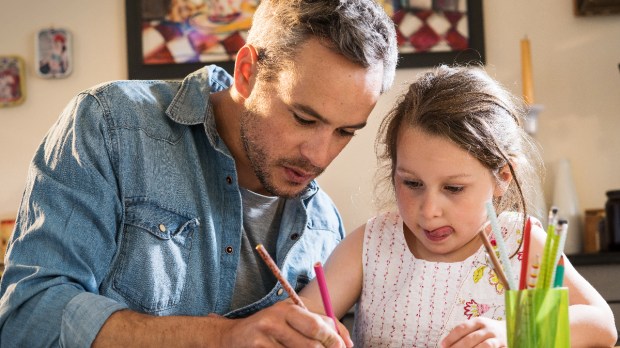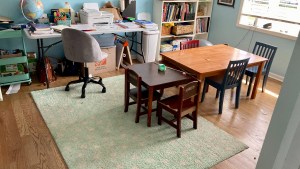We all know that kid. The one who is always bouncing all over the place and who is in such a ceaseless buzz of activity that it puts the Energizer Bunny to shame.
Whether you’re teaching that kid in the classroom, homeschooling them, or helping them do their homework in the evenings, you need strategies to help them thrive academically when it seems to be enough of a challenge just to get them to hold still.
I’m the mom to a few kids like that, and I’ve learned a thing or two about helping my sweet little ones focus and buckle down to schoolwork.
Here are a few things that have worked for us!
1Use a visual timer
Kids are often oblivious to how long things take. Seeing the amount of time before their eyes really helps them stay on track.
When my kids have to do a task that they don’t like, such as cleaning their rooms or completing a handwriting worksheet, seeing it on a “time timer” really helps!
The one caveat is that some kids don’t like setting a timer for tasks they enjoy, as they want the freedom to spend extra time on work that catches their interest. But a timer is really motivating to get through a disliked task.
2Use music or ear protection
Some kids find that music motivates them, while other kids need things really quiet in order to focus. The same kid might like both depending on the subject: My kids like to listen to music while doing routine tasks, but like silence when they’re really concentrating.
The solution is to pay attention to auditory input and what the child needs at the moment. I have a set of ear protection “earmuffs” for each of my kids. They are encouraged to use these when they need quiet. They also have the option to listen to music during school time if it’s helpful to them, using headphones so the other kids don’t have to listen if they don’t want to.
3Remove distractions and simplify space
Clutter and mess make it harder to focus, so keeping the workspace clear and clean really helps kids focus. Easier said than done, of course! Ideally there can be time each day to restore and refresh the school space. My kids are expected to help keep their school area clean.
4Take schoolwork outside
There is something regulating and calming about being outdoors, so I try to take schoolwork outside as much as possible. That handwriting page or math worksheet can be done just as easily outside as inside. (I even came up with what I call “park schooling” in which we take schoolwork to the park and work on it between play breaks.)
At school, teachers might take classes to sit outside whenever there’s an opportunity.
5Do heavy work or outdoor/physical activity first
When it’s not possible to do schoolwork outside, a great option is to arrange for outside time or physical activity before starting school. Heavy work in particular is calming for kids. It’s a great idea to incorporate it whenever you have an opportunity.
6Offer options to self start
Many kids like to feel a sense of control over when and how they work. Finding ways for them to be self-directed helps them “buy in” to the activity.
For example, one of my kids likes to listen to an audiobook or podcast first thing in the morning, and to also listen to something while doing handwriting. It has become a morning routine for this child to grab a handwriting page and turn on a podcast (with headphones!) as the rest of the family is getting up. This child used to hate handwriting, but something about being in charge of when and how the work gets done really helped.
7Incorporate movement
One of my friends told me her sons like to shout out answers to math questions while dribbling basketballs around her basement schoolroom.
Even if you’re not comfortable with quite that much movement, look for ways to incorporate movement into schoolwork to help your little ball of energy stay on track.
Perhaps the child can sit on a wobble chair or draw a picture while listening to a read-aloud, for example.
All of this might seem like so much work, and it is, but some kids need that extra support. Our kids are worth the best efforts we have to give them.
If you’ve got that kind of kid in your home or classroom, I hope these ideas will be as useful for you as they’ve been for me and my family.



